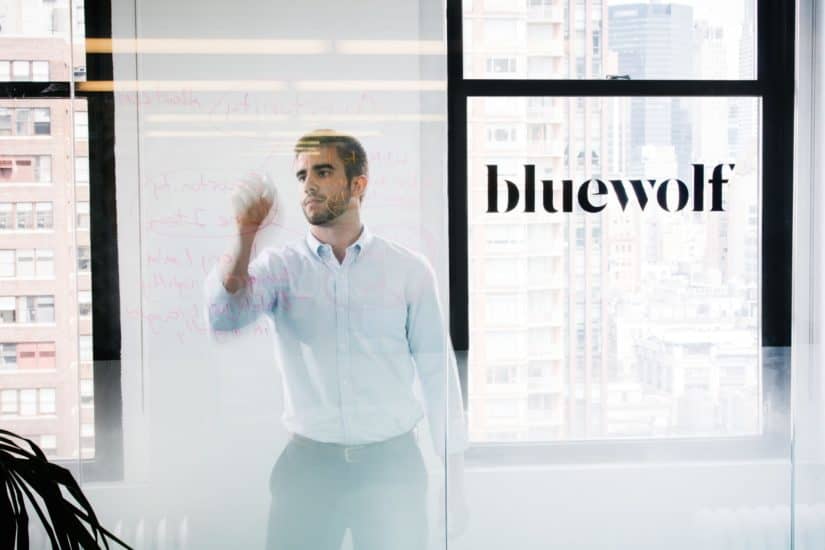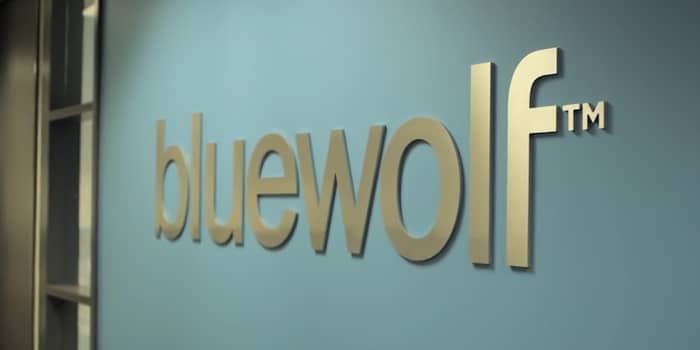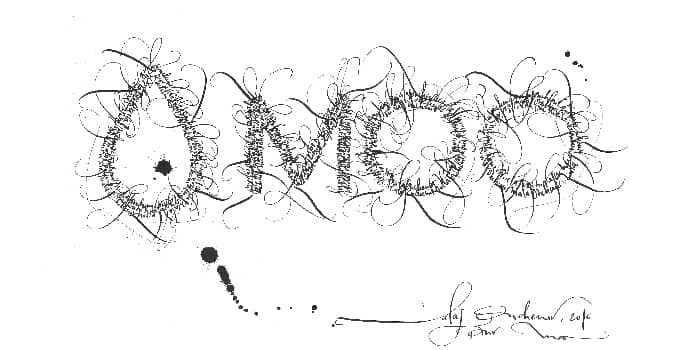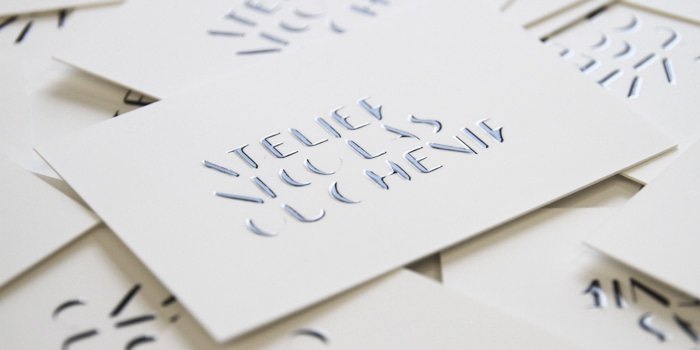Behind the brand refresh: Bluewolf

Whether you’re hoping to attract new customers, inject some newness into your business or maintain your market position, a brand refresh may be in order. That rang true for Bluewolf, a global consulting agency. We chatted with Saleema Fazal, the company’s Director of Brand Marketing, about what it really means to refresh your brand from the inside out.

Why redesign?
The Bluewolf logo was originally designed in the company’s early days by a friend of the founder. Fifteen years and twelve offices later, the time was right to develop an identity that conveys the company Bluewolf has become.

The research
Bluewolf teamed up with global branding agency Moving Brands for the project. They kicked off the process with research, and a lot of it. “One of the big line items in our brief to them was that we have to stand out,” Fazal said. “We’re not going into this exercise to just fall into a world of logos that look exactly the same as our competitive market.”
Early on, the market assessment revealed that many of Bluewolf’s competitors are quick fixers — they come in, do a project, and then they’re done. Meanwhile, in internal and client interviews, Moving Brands heard something quite different about how Bluewolf works. They’re in it for the long run, serving as true partners for many types of projects, and for many months or years. This quickly stood out as a key differentiator.
The new language
With research wrapped, Bluewolf and Moving Brands tackled the brand language. “We used to call ourselves a global consulting firm,” Fazal said. “We brought in the word ‘agency’ as a very intentional choice to broaden our service set to the market.” While “firm” sounded like a company that specialises in a single service, “agency” felt truer to the Bluewolf brand: a long-term partner that offers a diverse range of services to help clients connect to their customers and their employees.
Another theme that came up again and again was immediacy. “Our company is really known for the idea of what you can do now rather than setting up hypotheticals about what you can achieve down the road,” Fazal explained. To bring this message to the forefront, Moving Brands came up with the tagline, “It’s Always Now”.
The new logo
Next up: the look. One of the four initial concepts Moving Brands presented revolved around the idea of a whiteboard. “The first whiteboard execution we saw was hand-drawn and felt a little young for us, but the idea felt right for our culture,” Fazal said. As this creative direction emerged, Bluewolf and Moving Brands went through round after round of revisions, crafting every last detail of the brand.
The shapes seen in Bluewolf’s brand system — circles, Xs, arrows, and underlines — are the symbols the team uses in markup language on a whiteboard.
Getting the team involved
With a huge staff spread across 12 offices from San Francisco to Sydney, it was important to get the entire team — or “Pack” as they call it — involved in the rebranding process.
“We wanted people to get closer to the brand because, while there is an important external message, there’s also an internal narrative, which is our story of the Pack,” Fazal said. She partnered with Bluewolf’s Global Talent Management team to create a “pretty epic internal communications plan”. They shared major branding milestones along the way to keep the process open and transparent, and provided managers with the tools to communicate this new language to their teams.
External launch
The new Bluewolf officially launched in September of 2015, and since then, Fazal and her team have taken the look and language live, from event swag to the company website and their presence on social networks and partner platforms.
In March, Bluewolf announced another round of big news: it’s being acquired by IBM Interactive Experience, where it will continue to operate under the newly polished brand. As Fazal notes, being acquired wasn’t an intentional goal of the rebrand, but the new look and language certainly made them more accessible.
Time to reset your brand? Check out our brand refresh checklist.
We’re on a mission to find out all the wonderful ways you can turn your passion into a full-time business. Founded by Sydney-based Dan and Joe, Townske is a new social media platform that allows people to share and discover city guides in a super easy and visual way. We shared a cold brew with Dan and grilled him about their story so far.
Where did the idea for Townske come from?
We were visiting NYC for the first time and, like any Australian, we wanted to find good coffee. We couldn’t! So we went on a mission to find the best coffee spots all over the city. We found that good coffee did exist, but the apps we were using were too complex and time consuming. Most people don’t have the time to do this, they just want to know the places that are right for them – quickly.
So we started to design the platform we wanted to use. Finding amazing cafes really enriched our NYC experience and our trip was so much better as a result.
How do you see it competing against established travel guides?
Competing products didn’t meet our needs for getting to know a city. We found that the problem with review sites was that you didn’t know who was giving the review and an opinion is only relevant if you trust the person who is giving it. This is one of the key problems that Townske is going to solve and one of our differentiators.
How has the development of Townske been funded so far?
Currently we’re self funded through our established e-commerce company –rushfaster.com.au. So we’re not actively looking for funding at the moment. Instead, we’re focused on proving our assumptions and building a great product. Once we’ve done this, it’s in the business plan to raise capital.
As well as the launch, what are your plans for Townske over the next 12 months?
We will be looking for investment when we can prove our business model assumptions. We’re close to much of this. We’re also talking with some big brands about partnerships. Right now we’re building a solid team, iterating through product designs & working on the App which will come out soon.
What is Townske’s mission – what are you out to change?
We will cut down the time people spend researching their holidays and improve the experience they have. With Townske, people can have much better holidays and far richer experiences within their own cities. We want to help people have fun and feel like a local in any city in the world.
Are you setting up a business? If so, what are you on a mission to change? Tell us in the comments below!
We’re on a mission to find out all the wonderful ways you can turn your passion into a full-time business. So we spoke to Allan Baudoin, London-based independent shoemaker who’s been turning heads over the past few years for his handmade and bespoke shoes.
Could you tell us a little bit about your journey so far?
My first job was at Apple working in strategy and marketing. I realise now that it’s obvious I wasn’t made to work in a big company. One day, I took some shoes to a 62-year old shoemaker who’d just opened a little repairs workshop. Since I was a kid, I’ve always wanted to know how shoes were made, so I asked him to tell me everything.
And just like that you started a business with your randomly met shoemaker?
I spent maybe a year [with him], it was like an apprenticeship. I’ve met so many shoemakers in the industry, and no-one has been even nearly as good as he is. It was pure luck that I ended up finding one of the best shoemakers in the world.
How’s the business changed over the past few years?
At the beginning, I’d deal with the business side and he’d deal with the making side but then I got more experience. Two-and-a-half-years in, I’m about to start a new company making ready-to-wear shoes. My plan is to make shoes inspired by sartorial, super Savile Row stuff – but something that’s more affordable.
You’re way more active on Instagram than other social media – why?
Instagram is huge for the kind of maker that I am. A lot of people get known through the app. That’s how I got my second wave of customers. The first wave was through my own network and me going everywhere. The blogs started posting what I did, and I got better and better, got more coverage, and then it grew from there.
What advice would you give to businesses that use Instagram?
People like impressive stuff; they like novelty. When I take pictures, it takes me hours to get them to the highest possible standard. If you have a good product then people will follow you. Try to show some craft videos and photos, and then some finished views. Try to mix it up, and post them in an order that makes sense.
You have a Master’s in management. What’s the most important thing you learnt from the course?
Knowing how to use computers is really important. Things like SquareSpace, Stripe, Google Docs, knowing how to start a company with these free collaborative products, and then being in the know as to what the newer services are.
Here at MOO, we know how to make a great lasting impression and our Rounded Corners are inspiring your creative minds everywhere. We love it when you share your experiences and results with us. So we caught up with Freelance Designer Isaac Gibson, to get the lowdown on how he created his own playing cards. Snap.
So what inspired your business cards?
Firstly, I wanted to go with Rounded Corners as I think it’s stylish and different. I want to stand out from the crowd.
But the biggest inspiration for my cards was seeing so many things go to waste. For this reason I wanted to create a set of playing cards from all recycled and repurposed materials.
The packaging was inspired by Jeff Gray, founder of Scene3. He recycles old skateboards into useful everyday accessories. I pitched the idea to Jeff and he jump on board and created the packaging for me out of recycled skateboards.
What did you enjoy about the process?
Being able to see the playing cards go from concept to digital design to holding them in my hands was an awesome process. I love that all the materials used in creating these cards are recycled. I hope it will inspire other people to look around them for things they could recycle/repurpose to create cool stuff.
Cracking work Isaac Gibson! If you need a touch of inspiration or help promoting your project or business take a look at how MOO could help.
Discover the Rounded Corners Collection.
Oh, and if you already have some cards of your own, share your #MOOcards on social channels – don’t be shy!
After setting up his own calligraphy practice in a former Parisian butchery twelve years ago, Nicolas Ouchenir has gone on to become one of the most sought-after penmen in the fashion world. Invitations for swanky events need to be equally slick, so repeat custom from likes of Vogue, Rick Owens and Hermès suggests he’s on to a winning formula.
We spoke with the dab hand himself about calligraphy, the inspiration for creating a typeface, and just who has the most memorable signature of all time.
You wanted to be a butcher as a kid, then you went to college to study Economics. How did you end up as a calligrapher?
I’ve always been passionate about writing because writing is everywhere – especially in Paris, the city I was inspired [in]. I did business school because I didn’t know what else to do. After an internship in finance that I didn’t like, I decided to work in a gallery because it had always intrigued me. I started calligraphy when I was working for the JGM Galerie in Paris, which represents contemporary and neo-realist artists. We did an exhibition of drawings by Andy Warhol, and art by Niki de Saint Phalle, and I sent hand-signed cards to all of my invited guests. The feedback we received was amazing, and the exhibition preview was a great success. This is when I completely abandoned the idea of group mailing and digital invitations, and started to invite everyone with handwritten letters. After that, my first contract was for the Palace of Versailles – an evening held by the American Friends of Versailles with over 700 people. I still wasn’t sure what I was doing, but everything went well. From then on, I only focused on calligraphy.
When you’re doing fashion week invitations, you’re doing hundreds and thousands of them every day, 11 hours a day. Is there a trick to staying so focused?
I always work surrounded by people, which I think helps. I can do many thousands of invites without even noticing. I don’t mind working like crazy, so fashion week suits me very well!
What is your process for making a character or font style for a brand? How do you decide which elements to focus on?
Sometimes it’s immediate, and sometimes it can be very long. There is no rule. It begins with a discussion, then I develop a mood board, and then there are interactions between fashion houses and me to arrive at the final project. But everything inspires me. I use all my senses to create.
You’ve said before that you practice every day, and you once worked with a 102-year-old master Chinese calligrapher for three weeks without talking. How do you push yourself when you’re already at the top level?
I don’t really see my art as work in the first place. To be a good dancer, you have to train to improve as well. Above all it’s [about] finding inspirations that help me to improve myself – travel, thought, music, drawings, paintings…
How much do you think the aesthetic of calligraphy impacts people? Can it have more effect than the words themselves?
Writing is a way to express feelings in a particular context. The choice is made according to the emotions of the moment. It’s recognised by the rhythm of writing. People write less because they’re afraid of themselves, and afraid of their feelings. The way we write is signed, and it scares people. It reveals much more than any other form of message.
If you could pick any person or brand, dead or alive, who would your last client be?
Hugo Matha, who is very important for me.
You only agree to non-exclusive contracts. Has this led to losing business in the past?
Art is freedom and self expression. If I want to stay creative, I can’t imagine locking myself in exclusive contracts. The most important thing in my work is interactions with people and brands.
You’ve said that your inspiration for characters come from everywhere. What’s the weirdest thing you’ve been inspired by?
Generally I am inspired by everything around me. The street inspires me enormously. One day, though, I was drawing with a cut finger. The blood running down the paper created beautiful stains.
What about you, what are you inspired by? Let us know in the comments below!
Written by Jonathon Bartlett












